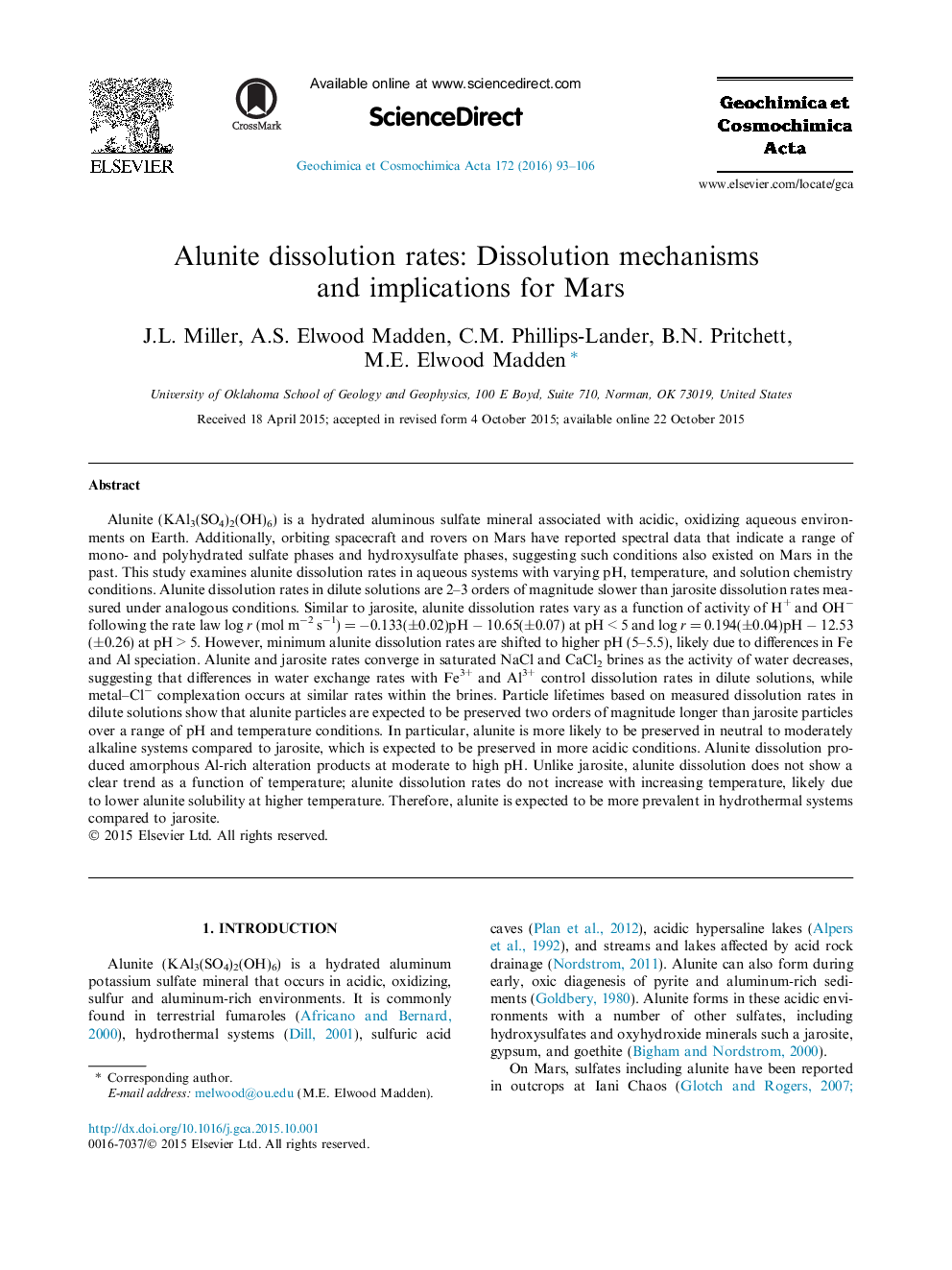| Article ID | Journal | Published Year | Pages | File Type |
|---|---|---|---|---|
| 6437687 | Geochimica et Cosmochimica Acta | 2016 | 14 Pages |
Abstract
Alunite (KAl3(SO4)2(OH)6) is a hydrated aluminous sulfate mineral associated with acidic, oxidizing aqueous environments on Earth. Additionally, orbiting spacecraft and rovers on Mars have reported spectral data that indicate a range of mono- and polyhydrated sulfate phases and hydroxysulfate phases, suggesting such conditions also existed on Mars in the past. This study examines alunite dissolution rates in aqueous systems with varying pH, temperature, and solution chemistry conditions. Alunite dissolution rates in dilute solutions are 2-3 orders of magnitude slower than jarosite dissolution rates measured under analogous conditions. Similar to jarosite, alunite dissolution rates vary as a function of activity of H+ and OHâ following the rate law log r (mol mâ2 sâ1) = â0.133(±0.02)pH â 10.65(±0.07) at pH < 5 and log r = 0.194(±0.04)pH â 12.53(±0.26) at pH > 5. However, minimum alunite dissolution rates are shifted to higher pH (5-5.5), likely due to differences in Fe and Al speciation. Alunite and jarosite rates converge in saturated NaCl and CaCl2 brines as the activity of water decreases, suggesting that differences in water exchange rates with Fe3+ and Al3+ control dissolution rates in dilute solutions, while metal-Clâ complexation occurs at similar rates within the brines. Particle lifetimes based on measured dissolution rates in dilute solutions show that alunite particles are expected to be preserved two orders of magnitude longer than jarosite particles over a range of pH and temperature conditions. In particular, alunite is more likely to be preserved in neutral to moderately alkaline systems compared to jarosite, which is expected to be preserved in more acidic conditions. Alunite dissolution produced amorphous Al-rich alteration products at moderate to high pH. Unlike jarosite, alunite dissolution does not show a clear trend as a function of temperature; alunite dissolution rates do not increase with increasing temperature, likely due to lower alunite solubility at higher temperature. Therefore, alunite is expected to be more prevalent in hydrothermal systems compared to jarosite.
Related Topics
Physical Sciences and Engineering
Earth and Planetary Sciences
Geochemistry and Petrology
Authors
J.L. Miller, A.S. Elwood Madden, C.M. Phillips-Lander, B.N. Pritchett, M.E. Elwood Madden,
